Collection / Armenian
Sculpture
The development of stand sculpture in Armenia starts in the 1990's, in the context of active contacts with Russian and European culture.
Yervand Voskan (1855-1914), a graduate of the Academy of Fine Arts in Rome, worked in Constantinople and Paris and was perhaps the first Armenian secular sculpture.He is known thanks to two works kept in the Gallery, namely the “Self-portrait” and the “Poor Old Man”, which demonstrate his professional skill.
The founder of the portrait genre in sculpture was Andreas Ter-Marukian (1875-1919), who was born in Yerevan, and graduated from the Academy Julienne in Paris.In 1919 he created the monumental portrait of Khachatur Abovyan. Later on it was transported to Yerevan 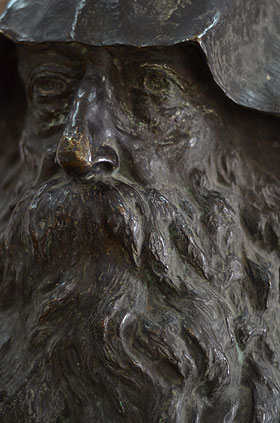 and erected in front of the writer’s memorial museum in Kanaker. His portraits of Armenian public figures and well-known artists are distinguished by great skill and acute characterization. The bronze bust of Catholicos Mkrtich Khrimian maintains true sculptural tradition; the attention is concentrated on his inner world, his tirelessness, and grandeur.
and erected in front of the writer’s memorial museum in Kanaker. His portraits of Armenian public figures and well-known artists are distinguished by great skill and acute characterization. The bronze bust of Catholicos Mkrtich Khrimian maintains true sculptural tradition; the attention is concentrated on his inner world, his tirelessness, and grandeur.
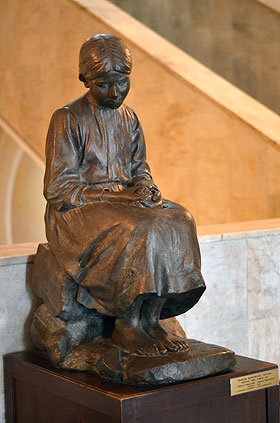 The genre of everyday-life scenes in sculpture was initiated by the works of Mikayel Mikayelian (1879-1943), graduate of the St. Petersburg Academy of Fine Arts and resident of Tiflis. By Miakayelian’s realistic approach and choice of themes, his works reflected social life and everyday scenes, and are close to the art of the Russian Peredvizhniks (“The Girl with the Broken Jar”, “Sexton Sakan”, and “An Old Woman Threading a Needle”).
The genre of everyday-life scenes in sculpture was initiated by the works of Mikayel Mikayelian (1879-1943), graduate of the St. Petersburg Academy of Fine Arts and resident of Tiflis. By Miakayelian’s realistic approach and choice of themes, his works reflected social life and everyday scenes, and are close to the art of the Russian Peredvizhniks (“The Girl with the Broken Jar”, “Sexton Sakan”, and “An Old Woman Threading a Needle”).
The greatest sculptor of the first half of the twentieth century, Hakop Gurdjian (1881-1948) raised this branch of Armenian art to international standards. Born in Shushi, having studied and worked in Russia and France, this artist was closely attached to his motherland. He was familiar with Armenian and Russian outstanding personalities. Inspired by their inner world and brilliant individualities he created a series of marvelous portraits. Lev Tolstoy, Maxim Gorky, Alexander Shirvanzadeh, Sergei Rakhmaninoff, Georgi Yakoulov, Martiros Sarian, and Feodor Chaliapin present an incomplete list of those portraits. In his works Gurdjian acts as a mature artist freely mastering the devices of sculptural composition, sometimes with detailed modeling and other times in bold expressive forms. The author’s versatile talent is also witnessed by his monumental, decorative, and animalistic works. 400 of about 500 of his works kept in the Gallery were donated by his widow.
The further devilopment of Armenian sculpture is connected with the names of the earliest masters of Soviet art: Ara Sargsian (1902-1969), Suren Stepanian (1895-1971), Aytsemnik Urartu 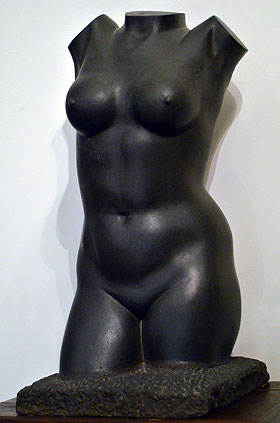 (1899-1974), Stepan Tarian (1899-1954), Sergey Merkurov (1881-1952) and Yervand Kochar (1899-1979), who in late thirties returned to Armenia, Inspired by the renaissance of the young country, they strived to create new art reflecting the individualities and the atmosphere of the new historical period. Thanks to the ardour and creative search of those artists, in the 1920’s-30’s the main characteristics of national sculpture were formed, namely simplicity and restraint, logical justification of sculptural transitions, and pithiness of form. The monumental works of the mentioned artists are erected in Yerevan and other places of Armenia, while their most significant works are kept and exhibited in the Museum.
(1899-1974), Stepan Tarian (1899-1954), Sergey Merkurov (1881-1952) and Yervand Kochar (1899-1979), who in late thirties returned to Armenia, Inspired by the renaissance of the young country, they strived to create new art reflecting the individualities and the atmosphere of the new historical period. Thanks to the ardour and creative search of those artists, in the 1920’s-30’s the main characteristics of national sculpture were formed, namely simplicity and restraint, logical justification of sculptural transitions, and pithiness of form. The monumental works of the mentioned artists are erected in Yerevan and other places of Armenia, while their most significant works are kept and exhibited in the Museum.
Armenian sculpture especially flourished in the post-war period, when art found heroes of the new peaceful time, and new emotional atmosphere. The leading masters, representatives of the middle generation, alongside with Samvel Manasian (1907-1979), Derenik Danielian (1912-1994), Edda Abrahamian (1914-1957) and Hovhannes Bejanian 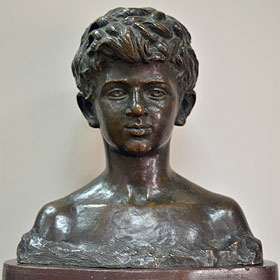 (1915-1976), continued creating outstanding pieces of art of all forms, from monumental sculpture up to small figures. They carved in stone and wood, created the bronze images of their contemporaries, of distinguished figures of the past, and of national heroes, revealing their character and civic ideals. The monuments and busts created in those years – Suren Spandarian, Nelson Stepanian, Mesrop Mashtots and Sahak Partev by Ara Sargsian (1902-1969), Khachatur Abovian, and Hovsep Orbeli by Suren Stepanian (1895-1971), and Davit of Sasun by Yervand Kochar (1899-1979) – form an integral part of the treasury of Armenian sculpture.
(1915-1976), continued creating outstanding pieces of art of all forms, from monumental sculpture up to small figures. They carved in stone and wood, created the bronze images of their contemporaries, of distinguished figures of the past, and of national heroes, revealing their character and civic ideals. The monuments and busts created in those years – Suren Spandarian, Nelson Stepanian, Mesrop Mashtots and Sahak Partev by Ara Sargsian (1902-1969), Khachatur Abovian, and Hovsep Orbeli by Suren Stepanian (1895-1971), and Davit of Sasun by Yervand Kochar (1899-1979) – form an integral part of the treasury of Armenian sculpture.
In 1946 Grigor Aharonian (1896-1980) repatriated from Bulgaria and joined this mighty group of sculptors. The early fifties are marked by the artistic achievements of the graduates of the Yerevan Institute of Fine Arts, namely Nikoghayos Nikoghosyan (1918), Ghukas Chubaryan (1923-2009), Grigor Badalian (1922-1993), Sergey Baghdasaryan (1923-2001), Tereza Mirzoyan (1922), Khachatur Iskandaryan (1923) and Ara Harutyunian (1928-1999). 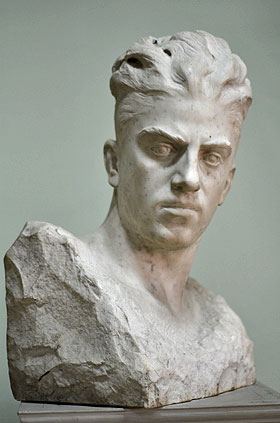 Continuing the firm and stable traditions of the elders, they considerably enriched Armenian sculpture, each of them in accordance with their own endowments and preferences, and the peculiarities of their own style. The works of this original artists reflected historical events, heroic themes, and everyday life in its various manifestations.
Continuing the firm and stable traditions of the elders, they considerably enriched Armenian sculpture, each of them in accordance with their own endowments and preferences, and the peculiarities of their own style. The works of this original artists reflected historical events, heroic themes, and everyday life in its various manifestations.
In the 1960-1970’s the art of sculpture in Armenia widened its scope, when, alongside with the mentioned masters, their younger colleagues Serzh Mehrabyan (1931), Frants Simonyan (1935), Hakob Ishkhanian (1938), Artashes Hovsepyan (1931), Arto Chakmakchian (1933), Ervand Gojabashyan (1939), Levon Tokmajyan (1937), Benik Petrosyan (1924-1993), Ara Shiraz (1941), Yuri Petrosyan (1941), Ohan Petrosyan (1941), Tsolak Simonyan (1940), Tariel Hakobyan (1942) and others, started creating their works. Typical of this generation are the diverse and bold interpretations of sculptural images, the new means of expression, and the attempts of reviving the oldest national traditions.
The exhibition of Armenian sculpture concludes with the interesting works by Alexey Papovyan (1941), Samvel Ghazaryan (1949), Getik Baghdasaryan (1949), Norayr Karganyan (1948), Gagik Ghazaryan (1947), Tadevos Gevorgyan (1944) and others, who became known in the 1980-1990’s. Firmly connected with their national culture, and familiar with the rich tradition of the world art, each of them appears with his own ideas, introducing new conceptions into Armenian sculpture and predetermining the main trends of its development.
This picture of Armenian sculpture would be incomplete, without mentioning the artists who lived and worked outside Armenia but were always attached to their native culture. Having presented their works to the Gallery, they greatly contributed to the enlargement of its collection. Among them are artists endowed with high professional skills such as Daria Kamsarakan (1907-1986, France), Khoren Der-Harootian (1909-1991, USA) and Nvard Zarian (1917-2005, Italy), Zaven Kheteshian (1932, Lebanon), Michael Poladian (1938, Germany). Their significant role in the development of Armenian sculpture is distinct and apparent.